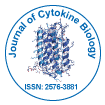A review of an explanation of Cytokine Release Syndrome
Received Date: Jul 04, 2023 / Published Date: Jul 31, 2023
Abstract
Cancer immunotherapy aims to eliminate cancerous tissues by using the immune system’s capabilities. After decades of study, a variety of cancer immunotherapies have demonstrated unambiguous clinical efficacy. These include graft-versus-leukemia, which eliminates leukaemia after hematopoietic stem cell transplantation (HSCT), monoclonal antibodies (mAbs), which prolong survival for people with B-cell lymphomas and breast cancer that expresses the HER2 gene, and a therapeutic cancer vaccine for hormone-refractory prostate cancer. Bispecific mAbs have mediated impressive responses in B-cell acute lymphoblastic leukemia7 (ALL), and dramatic antitumor effects have been observed using adoptive T-cell immunotherapy, which is increasingly using genetic engineering to create tumour antigen-specific T cells. Recently, mAbs that block key checkpoints on T cells have improved survival in metastatic melanoma and induced antitumor effects in other cancers.
Citation: Yung C (2023) A review of an explanation of Cytokine Release Syndrome.J Cytokine Biol 8: 450. Doi: 10.4172/2576-3881.1000450
Copyright: © 2023 Yung C. This is an open-access article distributed under theterms of the Creative Commons Attribution License, which permits unrestricteduse, distribution, and reproduction in any medium, provided the original author andsource are credited.
